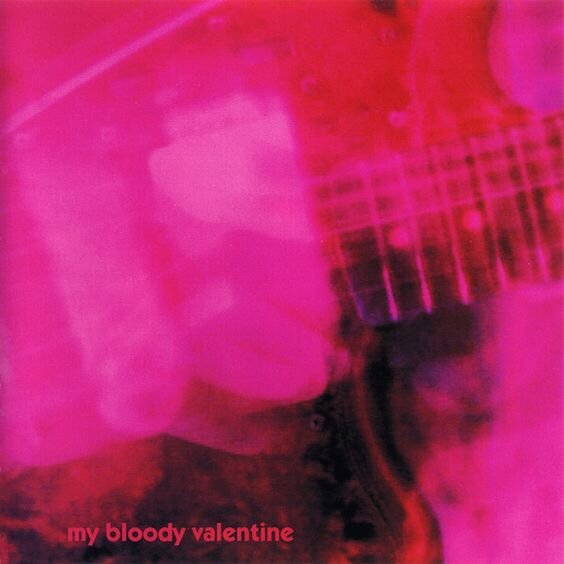“Loveless” By My Bloody Valentine: Looking Back on the Pioneering Album 30 Years Later
One has an idea of what they are about to hear just by the cover of “Loveless”. Upon first glance, the image looks like a mess of warm hues, inviting a sense of ardor and intensity that after looking closer reveals itself to be a guitar. Like the sound of My Bloody Valentine’s sophomore album, the cover is a hazy clutter which later exposes a sense of clarity, making it a seminal dream pop album.
When it first came out, “Loveless” was not met with widespread popularity. It led to the band’s split and nearly bankrupting their recording company, Creation Records. Despite those setbacks, the album has been cited as a primary influence for countless artists and critics since its release in 1991 have adorned it with incredibly favorable reviews, while always quick to include it as a blueprint for the shoegaze genre.
The Irish four-member group only put out two albums and one EP before breaking up, yet the band’s chemistry presented on “Loveless” was enough to create a legacy, even being named the best album of the 1990s by Pitchfork.
The first time I listened to this album I was making out with a boy in his car and when I heard “When You Sleep” I had to pause. To hear Kevin Shields sultrily sing the lines “When I look at you/ Oh and I don’t know what’s real,” felt like a slap in the face to my sixteen-year-old self, and to this day they still make me swoon into another dimension.
“When You Sleep” was the first single released from “Loveless”, and is in many ways the easiest to digest. The pop elements are some of their strongest and the lyrics are some of their most straightforward, establishing the theme of haphazard and frenzied love affairs for songs to come.
The second single “Only Shallow” begins the album with a jolt as Bilinda Butcher (vocals, guitar) counteracts the blunt wall of sound created by synths and guitars as her voice sounds like a feather. “Soft like there’s silk, everywhere,” she sings, “Sleep as a pillow, comfort there,” as the lines repeat and warp like a sort of fractured villanelle.
Following “Only Shallow” is “Loomer”, a shorter track used to counteract the intensity of the album's opener that’s played without Colm Ó Cíosóig’s drums. The song is eerie, as the title might suggest, as Butcher sings of “little girls in their party dresses” and “pretty boys with their sunshine faces” going to unrevealed lonely and holy places. The song fades into “Touched”, the only instrumental on the album. It lasts less than a minute yet has its own distinct sound that could easily find itself as a sample on Kanye West’s “Graduation”.
The sultry “To Here Knows When” is a song so full of swollen reverb that the listener can hardly hear the word “move” despite being repeated 25 times. The underlying action of the verb counteracts the hazy quality of the audio, a juxtaposition that litters the album, as shown in two upcoming songs “Come in Alone” and “I Only Said” which each contain the word “run.” “I Only Said”, appears as a sort of poetry exercise with the lyrics shuffled around in order to stretch the verses. The song contains one of the album's signature synth melodies that borders on off-putting while the lyrics remain wistful, as Shields sings, “To lay underneath the red sky there,” creating a sense of allure while evoking the album’s cover image.
Following is fan favorite “Sometimes”, a gradual five-minute descent into a full wall of sound that intimately tells of the path to let love in and feeling seen by another. The past tense of “Blown A Wish”, the album’s next song, insinuates what happens after cupid has shot his bow and feelings have formed. Butcher ends the song singing, “Once in love/ I’ll be the death of you,” her voice as sweet as roses as the listener cannot seem to prove her wrong.
“Loveless” fades out with two of its longest songs. “What You Want” crashes in with pounding drums, shifting the album's tone again as Shields asks, “Could I fall into the one who calms my mind?” The song is deeply attached to memory and past lovers, as the speaker seeks temporary desire as a solution to internal contortion and the ferocity of the music reflects this mental chaos. In contrast, “Soon”, begins more traditional and comes off far more optimistic in feel within the span of its near seven minute duration. The beat of the drums gives off a sense of hopefulness despite lyrics that, once again, contradict this notion. Shields repeats phrases like, “I want to love you,” “I let you get to me,” and “Come back, have faith,” all seemingly referencing the regret of losing a lover and the resistance that comes before acceptance.
In ways, the relationship of “Soon” and others marking the album echoes the one that the listener shares with “Loveless”. The wall of sound and occasional hard-to-digest noises can, upon first listen, cause the listener to turn away. Similar to the album cover, it takes close inspection and a time investment in order for the value of My Bloody Valentine’s music to present itself. In doing so the listener has the ability to be transported by the mutually caustic and cozy compositions as if sinking into crushed velvet. The album may be called “Loveless”, though I find there is much love to be found.
